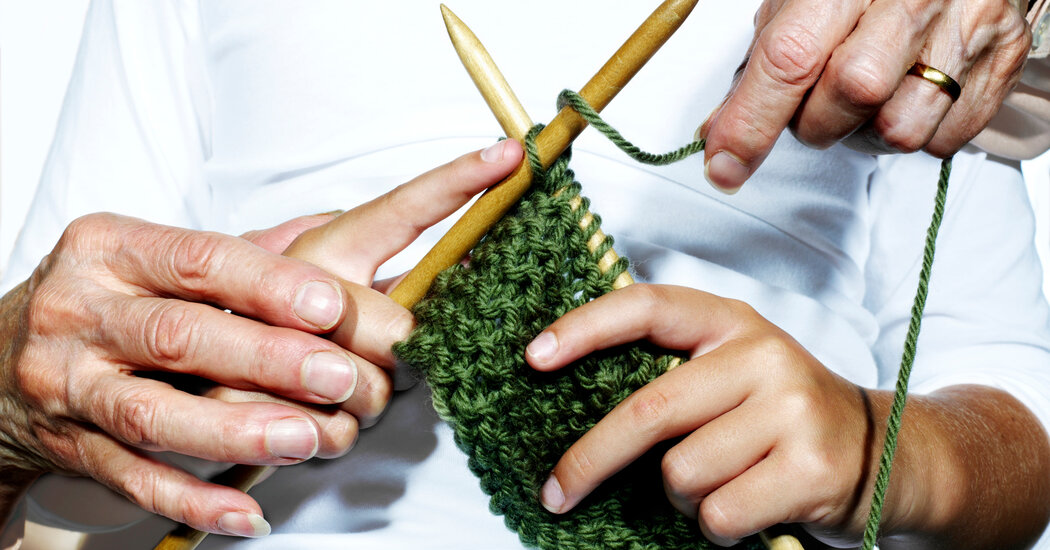As I stitched the next row, I thought about that lost world: big professional meetings. Casual travel from one city to another, armed with restaurant recommendations and the determination to take an hour to visit a local yarn store (The Quarter Stitch in the French Quarter). Family car trips. I had cast on 30 stitches for this scarf, as the very simple store pattern suggested, but my daughter wanted it longer and thinner, so I ripped out (“frogged” would be the usual term) after a few inches and started again with only 24.
How disgraceful, I thought, making my way back and forth across these short rows (knit 3 purl 3 repeat to end), and starting to beat myself up; I could so easily have been making a few inches of progress every day, this scarf could be finished, I could be beginning the next project. And I instantly recognized, this is how I tend to do self-care; I jump very quickly from something comforting that might yield a small sense of accomplishment to bitter self-reproach.
On the Zoom, we talked about learning to knit — about who taught us, and why that matters. Do you think that knitting sometimes skips a generation, I asked, and several of the others agreed. My own mother did not knit; I learned from my father’s mother, my Grandma Mimi, born in the East End of London, transplanted to the Lower East Side in the 1920s, where her self-described “Jewish Cockney” English was useless, and she had to learn Yiddish in order to shop, fraternize, and place and counter curses — my uncle wrote a story about my grandmother’s Yiddish witchcraft.
I tell you this to explain that she taught me “continental” style knitting, rather than “English,” which may be somehow traceable to that mix of ethnic identities. Thanks to her, I am a “picker,” not a “thrower” — I catch the yarn with my right-hand needle, instead of wrapping it. She made me the knitter I still am.
We mustn’t skip this generation. If you know the joy of knitting, this is the time to pass it on — and you have all the generationally appropriate tools available on YouTube where you can find all manner of beginning videos. For English knitting, there’s how to knit a scarf for beginners, or Ryan explaining how to knit in a cheerful accessible way — for continental, there’s Nancy or Maryna or Rokolee.
Rachel Schuster, the owner of Ewe and You, talked about using remote gatherings to foster the sense of community which used to manifest in group activities. Many of her customers, she said, knit for charity and give away what they make. “Just keep making, keep going, when you start getting into a rut of feeling sad, just keep going,” she said. “Completion is huge.”
I need to be in the moment, but I also need the future and the past. I’m doing a few inches every day now on the scarf for my daughter, and I have another ball of variegated velour, also from New Orleans, to make one for my son. I will feel the yarn in my fingers, I will be in the moment, but I will also be in those past moments, with the people I love most, moving through a world we want to see again. I’m going for completion.
[ad_2]
Source link


